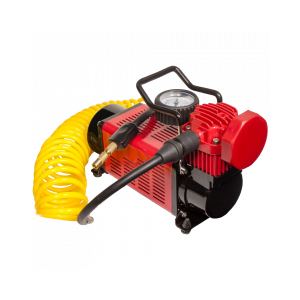Exploring O-Ring Backup Ring Systems for Enhanced Reliability and Performance
The O-Ring Backup Ring A Critical Component in Sealing Technology
In the realm of sealing technology, the O-ring is a well-known component used in a wide variety of applications, from automotive engineering to aerospace. However, as with any mechanical system, the potential for failure exists, which is why backup systems are essential to ensure reliability and safety. One such backup solution is the O-ring backup ring, a crucial innovation that not only enhances the performance of standard O-rings but also provides additional safety and longevity in critical applications.
Understanding the O-Ring and Its Applications
An O-ring is a circular, doughnut-shaped elastomer seal that is designed to be placed in a groove and compressed between two surfaces. When properly installed, the O-ring creates a seal that prevents leakage of liquids or gases. They are widely used in various industries including automotive, aerospace, petrochemical, and pharmaceutical sectors.
The effectiveness of an O-ring depends on factors like material selection, temperature resistance, and pressure conditions. For instance, high-temperature applications may require O-rings made of materials like fluorocarbon or silicone rubber that can withstand elevated thermal environments while maintaining their sealing properties.
The Need for Backup Rings
While O-rings are highly effective, they are not infallible. External factors such as high pressure, extreme temperatures, and aggressive chemicals can compromise their integrity. As service conditions become more demanding, there is a heightened risk of O-ring failure. This is where backup rings come into play, serving as critical supplementary components.
Backup rings are typically made from harder materials that can withstand high pressures and stresses that O-rings alone may not be able to endure. By providing an additional layer of protection, backup rings can enhance the performance of O-rings, prolong their lifespan, and significantly reduce the risk of failures.
The Design and Functionality of Backup Rings
Backup rings are usually designed to fit into the same groove as an O-ring but are positioned behind the O-ring. They can be symmetrical or asymmetrical, with varying thicknesses and materials depending on the specific application requirements. The two most common types of backup rings are the solid and split backup rings.
1. Solid Backup Rings As solid components, they do not have a split, providing continuous support to the O-ring. They are especially effective in applications that experience high axial loads.
o ring backup ring

2. Split Backup Rings These rings are divided into two segments and are easier to install. They are beneficial in applications where space is limited, or where the O-ring must be replaced frequently.
The primary function of a backup ring is to prevent the O-ring from extruding or becoming deformed under pressure. This helps maintain the integrity of the seal, thereby preventing leaks and ensuring the efficient operation of the machinery or system involved.
Advantages of Using Backup Rings
The incorporation of backup rings offers several advantages
- Enhanced Reliability With an additional layer of protection, the risk of O-ring failure is significantly reduced, ensuring consistent operation and safety.
- Extended Service Life By minimizing wear and tear on the O-ring, backup rings can help extend the overall lifespan of the sealing system.
- Cost-Effectiveness Fewer repairs or replacements can lead to substantial cost savings over time, making backup rings a worthwhile investment for many industries.
- Versatility Backup rings can be utilized in various configurations and are suitable for a wide range of applications, from hydraulic systems to high-pressure gas seals.
Conclusion
In conclusion, the O-ring backup ring is an essential element in sealing technology that enhances the performance and reliability of O-rings in challenging applications. By understanding the benefits and functionalities of backup rings, industries can better protect their systems, ensuring they operate efficiently and safely. Incorporating backup solutions into sealing designs not only mitigates the risk of failure but also supports longer service intervals and lower maintenance costs, making it a wise choice for engineers and manufacturers alike.
-
The Ultimate Guide to Car Repair Kits: Tools and Essentials Every Driver Should Own
News Aug.01,2025
-
The Complete Guide to Oil Pan Gaskets: Sealing Engine Leaks the Right Way
News Aug.01,2025
-
Preventing Oil Leaks: A Complete Guide to Oil Pan Gaskets and Drain Seals
News Aug.01,2025
-
Everything You Need to Know About Oil Pan Gaskets and Drain Plug Seals
News Aug.01,2025
-
Essential for Car Owners: How to Use a Car Repair Kit to Deal with Minor Breakdown
News Aug.01,2025
-
Comprehensive Guide to Engine Oil Sump Gaskets and Related Seals
News Aug.01,2025
-
The Ultimate Guide to Boat Propeller Bearings and Trailer Wheel Bearings
News Jul.31,2025
Products categories















